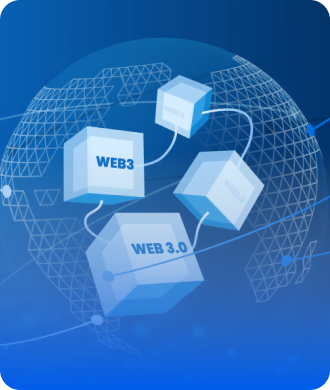
In the world of web development, choosing the right technology stack is most important to the success of any project. The Frontend and Backend tech stacks form the foundation of a web application, each playing a crucial role in its functionality, performance, and user experience. But how do you compare these two essential components to make informed decisions? Let’s delve into the key factors to consider when evaluating Frontend and Backend tech stacks, helping you make the best choices for your project.
What is Frontend Development?
The front end, or client-side, is what users directly interact with when using a website or application. It includes everything users see and interacts with, like buttons, menus, and forms. In web development, front-end technologies like HTML, CSS, and JavaScript are used to create these visual elements and make them interactive. Frontend frameworks like React or Angular help developers build responsive and user-friendly interfaces. Ultimately, the front end shapes the user experience and how people interact with the website or app. It aims to provide a visually pleasing and intuitive experience across different devices and screen sizes.
Build a Standout Web Development Project
Ready to elevate your web development project with a leading frontend development company? Let our experts guide you through the complexities of frontend and backend tech stacks, ensuring your project stands out with optimal performance, reliability, and user experience. Book a free consultation today and unlock the full potential of your web application!
What is the Backend Development?
The backend, or server-side, is like the engine of a website or app. It does all the behind-the-scenes work, like storing data, managing user accounts, and handling requests. Backend technologies, like programming languages (Python, Java, etc.) and frameworks (Django, Spring Boot, etc.), help developers build strong and reliable backend systems. While users interact with the front end, the back end ensures everything runs smoothly and securely.
Importance of Frontend Development:
Frontend development is important for creating engaging and user-friendly digital experiences.
User Experience: The front end is the user’s first interaction of contact with your website or application. A well-designed front with built-in navigation, visually appealing designs, and responsive layouts enhances user satisfaction and keeps them engaged.
Company Image: Your frontend design reflects your company identity and aesthetics. A balanced and visually appealing front end boosts company recognition and builds trust with users, leaving a lasting impression.
Accessibility: Ensuring accessibility in the front end makes your website or application usable for everyone, including individuals with disabilities. Implementing accessibility standards promotes comprehensive, meeting regulatory needs and connecting with a broader range of users.
Performance: Optimising frontend performance is essential for delivering a perfect user experience. Faster page load times and smoother interactions improve user satisfaction and reduce bounce rates, keeping users engaged and coming back for more.
Competitive Advantage: A well-designed and user-friendly frontend sets you apart from competitors. By providing an exceptional user experience, you attract and retain users, giving your business a competitive edge in the crowded digital landscape.
Importance of Backend Development:
Backend development is the backbone of any web application or website, providing essential functionality that users don’t see but rely on.
Data Management: The backend handles data storage, retrieval, and manipulation, ensuring seamless access to information and efficient data management.
Security: Backend development includes implementing security measures to protect sensitive data, authenticate users, and stop unauthorized access or data breaches.
Scalability: Scalable backend architecture allows websites and applications to handle increasing traffic and user interactions without compromising performance or stability.
Functionality: Backend development enables the implementation of complex business logic, workflow automation, and integration with external services or APIs, enhancing the overall functionality of the website or application.
Reliability: A robust backend architecture ensures the reliability and stability of the website or application, minimizing downtime and ensuring uninterrupted service for users.
Programming Languages and Frameworks:
One of the main considerations when comparing frontend and backend tech stacks is the choice of programming languages and frameworks. Evaluate the strengths, weaknesses, and suitability of different languages and frameworks according to your project requirements, scalability, and performance needs.
Performance and Scalability:
Evaluate the performance and scalability of frontend and backend technologies based on factors like rendering speed, server response times, and handling parallel user requests. Consider the efficiency of data processing, hide mechanisms, and scalability options offered by different tech stacks.
Developer Success and Community Collaboration:
Consider the availability of skilled developers and the strength of the developer community for each tech stack. Choose technologies with enough documentation, active community forums, and extensive libraries/plugins to facilitate development, debugging, and troubleshooting.
Security and Maintenance:
Evaluate the security features and best practices offered by frontend and backend technologies to safeguard against common weaknesses like cross-site scripting (XSS), SQL injection, and data breaches. Consider the ease of maintaining and updating applications built with different tech stacks over the long term.
API and Data Integration:
Assess the compatibility and integration capabilities of frontend and backend technologies with other systems, APIs, and third-party services. Consider the ease of integrating databases, cloud services, payment gateways, and authentication mechanisms into your application architecture.
Flexibility and Customization:
Consider the level of flexibility and customization offered by frontend and backend technologies to accommodate unique project requirements, design preferences, and future scalability needs. Choose tech stacks that allow for modular development, component reusability, and easy extensibility.
Cost and Resource Requirements:
Evaluate the cost implications and resource requirements associated with different frontend and backend tech stacks, including licensing fees, hosting costs, and infrastructure needs. Consider factors like development time, deployment complexity, and ongoing maintenance expenses when comparing tech stack options.
Final Words
Comparing frontend and backend tech stacks is crucial for making smart decisions in web development. Both frontend and backend technologies are important for how a website or app functions, performs and feels to users. When comparing these stacks, think about things like programming languages, how well they handle performance and growth, support from developer communities, security measures, ease of maintenance, integration abilities, flexibility, and overall costs. By considering these factors against your project needs and goals, you can pick the best frontend and backend tech stacks to create strong, adaptable, safe, and user-friendly web applications that suit your users and business.
Partner with a Leading Web Development Company
Ready to harness the power of the right technology stack for your web development project? Partner with a leading web development company to unlock the full potential of your website or application. Let our expertise guide you towards building a robust, user-friendly, and scalable digital solution. Book a Free Consultation today to embark on your journey towards web development success!



